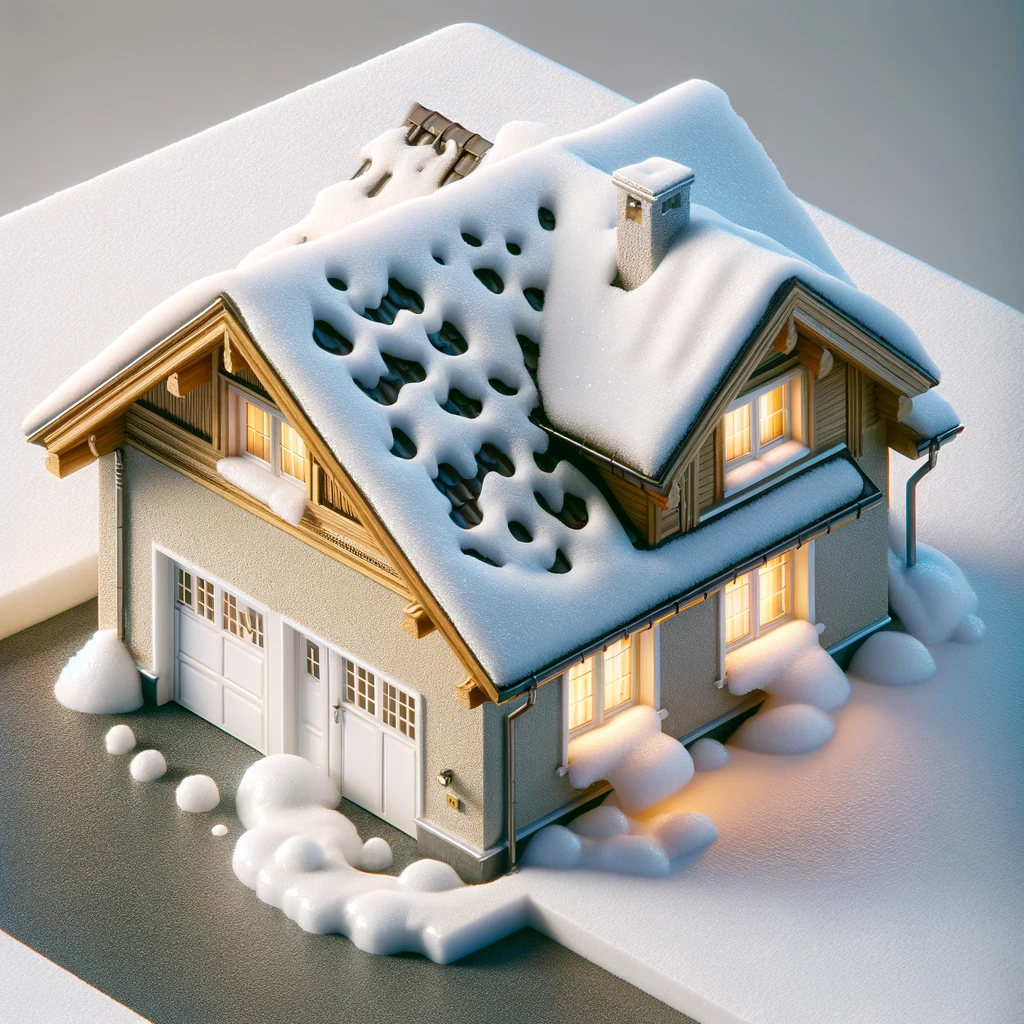Freshly Fallen Snow, Melted Away: Should You Worry About Your Roof?
You wake up to a winter wonderland, a fresh blanket of snow glistening on your roof. But as the day progresses, you notice a disconcerting sight – the snow is rapidly melting, leaving bare patches around your dormers and chimneys. Is this a sign of trouble? Should you be calling a roofing contractor or prepping for a DIY attic adventure?
Before you jump to conclusions, let’s dig deeper into the mystery of the melting snow. While poor insulation can certainly be a culprit, it’s not the only factor at play. Here are some key considerations:
1. Sun Exposure:
- Uneven melting can often be attributed to the sun’s position. South-facing roofs tend to melt faster than their north-facing counterparts, simply because they receive more direct sunlight. So, before you blame your insulation, compare your roof to your neighbors’. If theirs is melting similarly, it’s likely just a matter of sun exposure.
2. Roof Angle and Design:
- Steeper roofs tend to shed snow more quickly than flatter ones, simply due to gravity. Additionally, dormers and other architectural features can create areas where snow lingers longer, due to shading or reduced wind exposure. This doesn’t necessarily mean there’s a problem, just that your roof has some unique melting patterns.
3. Recent Snowfall and Temperature:
- Fresh snow has a lower melting point than packed snow, so it’s natural for it to melt faster, especially if the temperature is just above freezing. If it snowed recently and the temperature is mild, the rapid melting might be temporary and not indicative of a larger issue.
4. Attic Insulation:
- Now, let’s talk about the elephant in the room – insulation. Deficient attic insulation can allow heat to escape from your home and melt the snow on your roof. This can lead to ice dams, which can damage your roof and gutters. However, jumping to conclusions without proper investigation is never a good idea.
Here’s what you can do to get a clearer picture:
- Check your attic for adequate insulation. The recommended R-value for attics in New York City and Long Island varies depending on your specific zone, but generally falls between R-38 and R-49. You can measure the insulation depth yourself or consult a professional.
- Look for signs of moisture damage in your attic, such as mold, mildew, or warped wood. This could indicate that your roof is leaking due to ice dams caused by poor insulation.
- Consult a qualified roofing contractor for a thorough inspection. They can assess your insulation levels, identify any potential problems, and recommend solutions if necessary.
Remember, even if you do need to address your insulation, it doesn’t have to be a daunting task. Several reputable renovation service companies operate throughout NYC boroughs and Long Island, offering a range of services from insulation installation to attic ventilation improvements. You can find resources and recommendations through government websites like NYC.gov or the Department of Consumer Affairs (https://ag.ny.gov/).
In conclusion, while rapidly melting snow can be a cause for concern, it’s important not to panic. By carefully considering the various factors at play and taking the necessary steps to investigate and address any potential issues, you can ensure your roof stays healthy and your home stays warm throughout the winter.
Stay safe and warm this winter!






